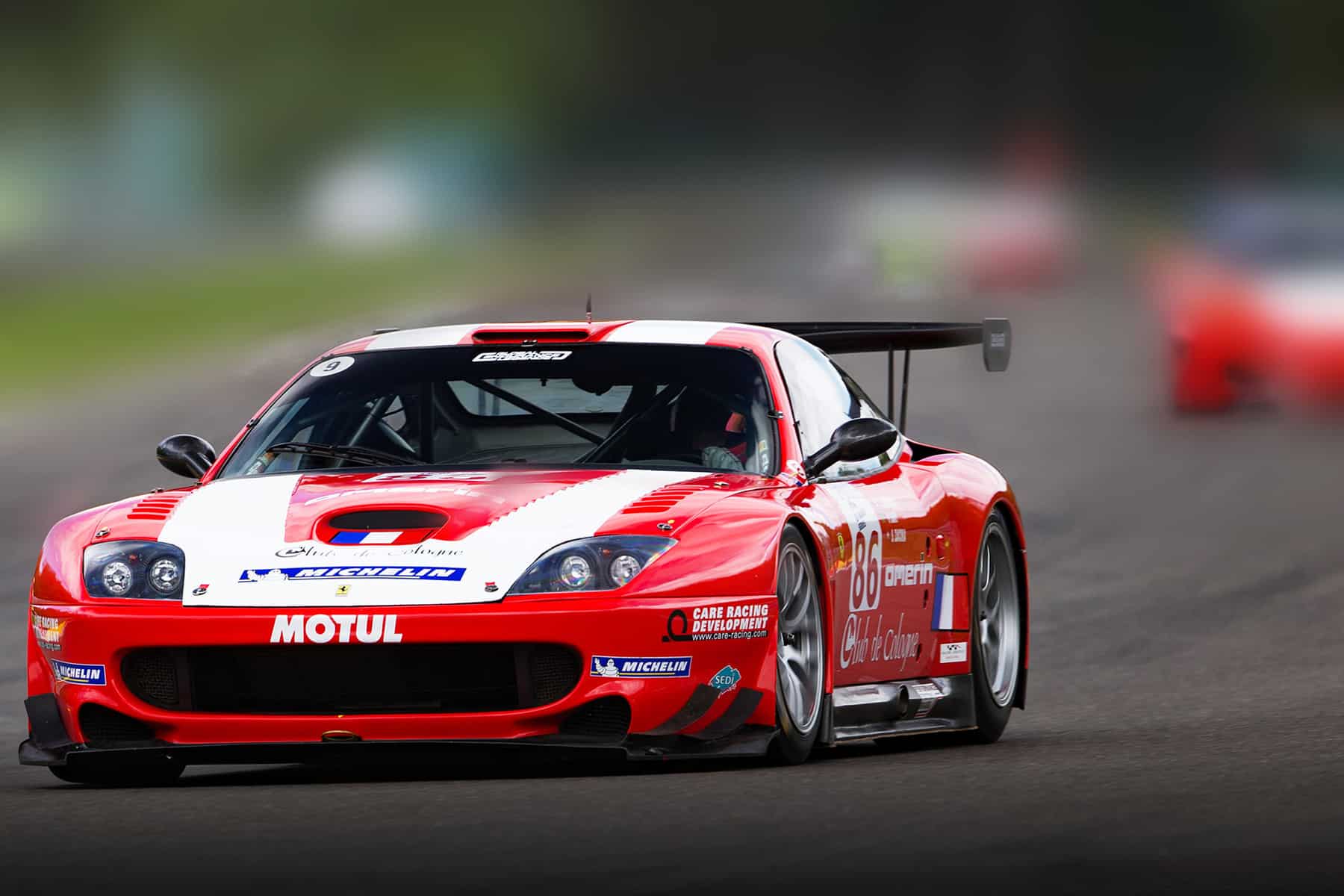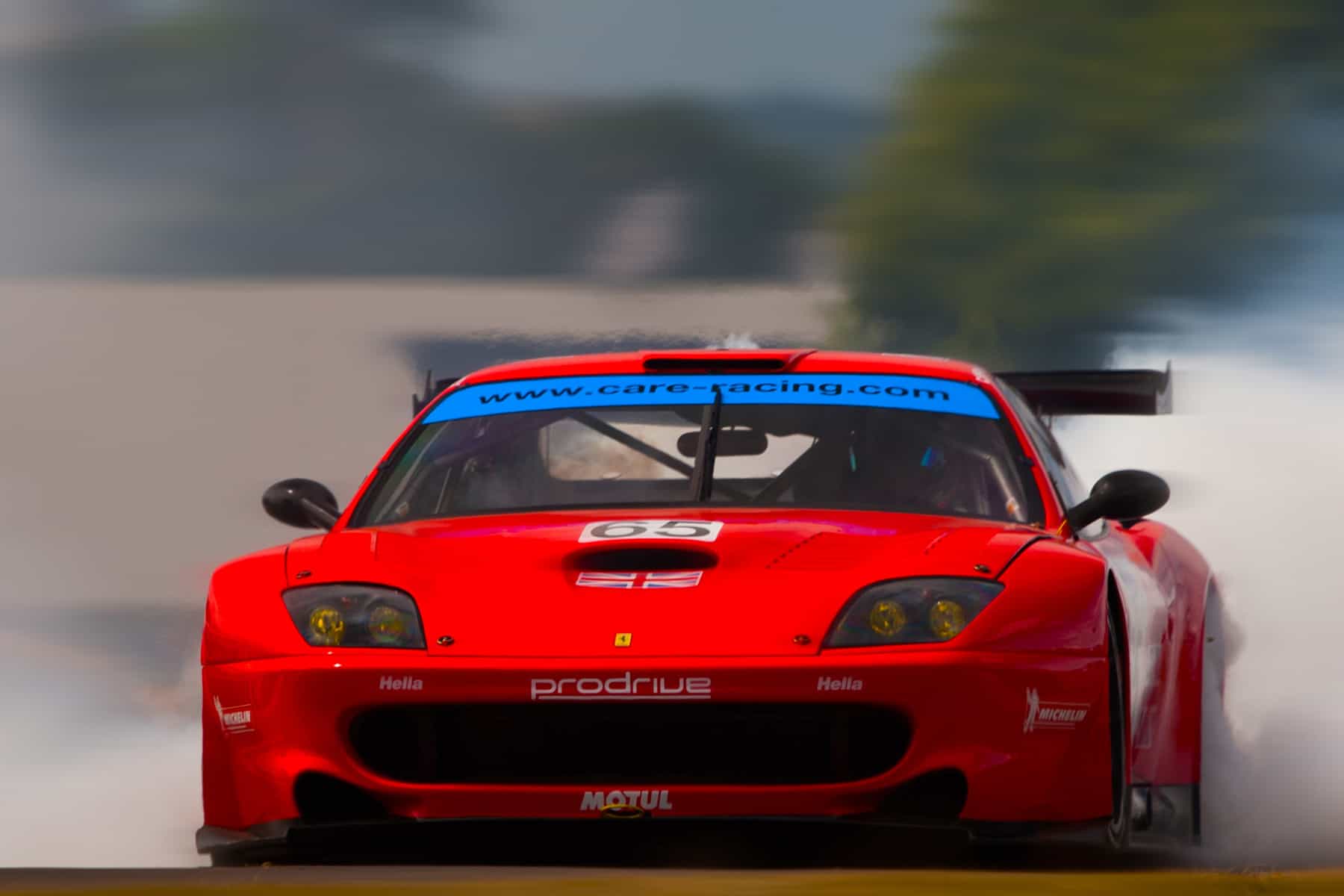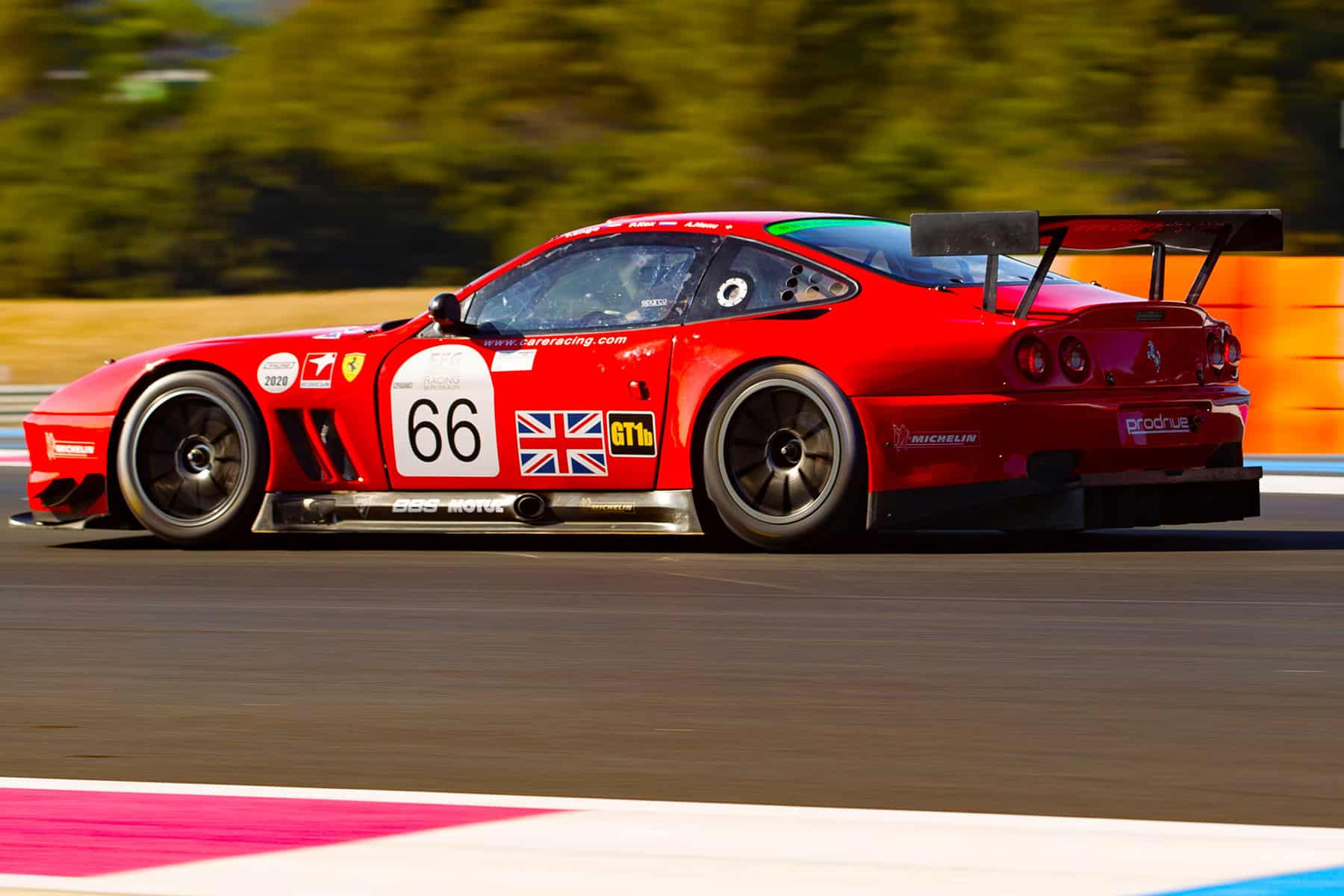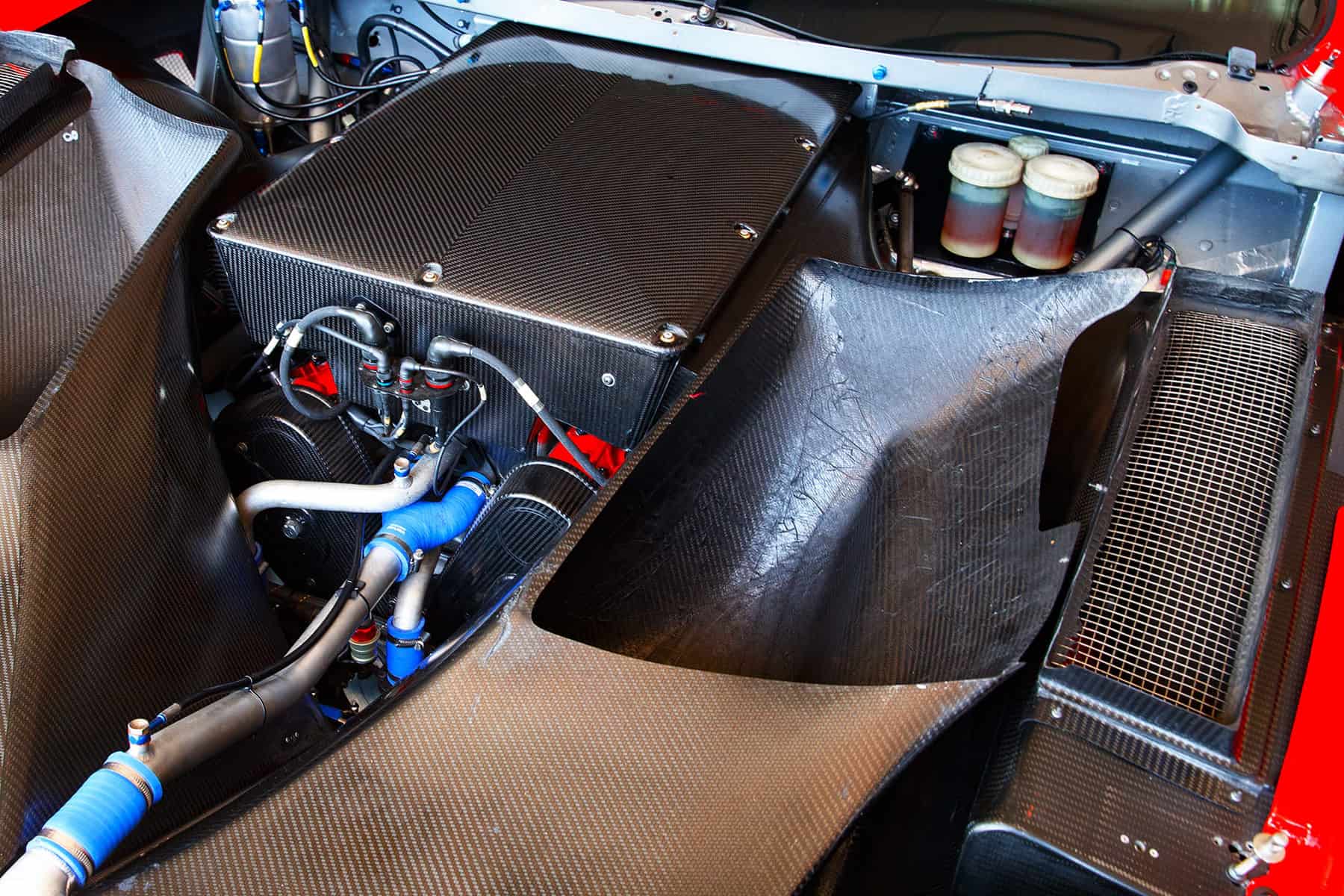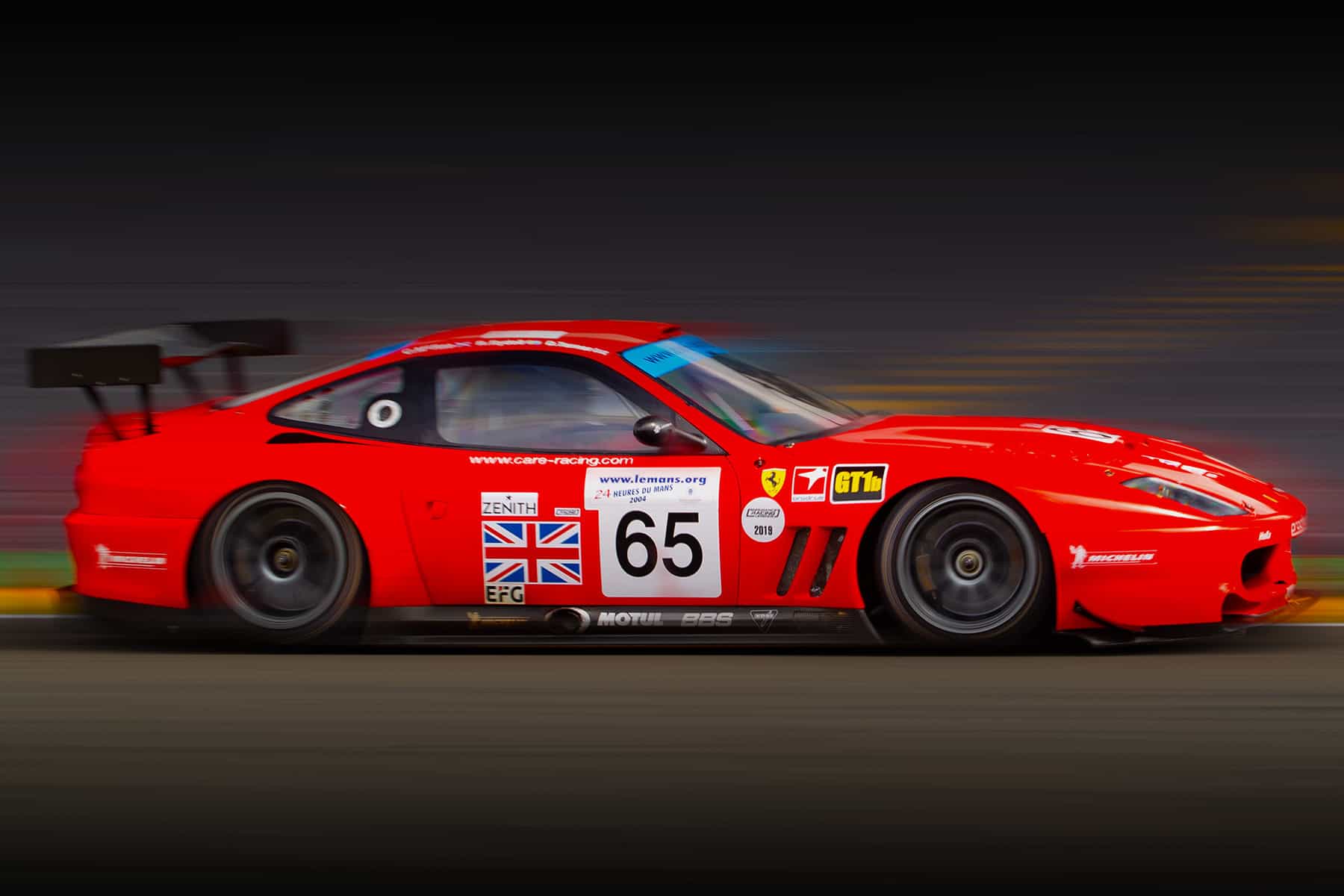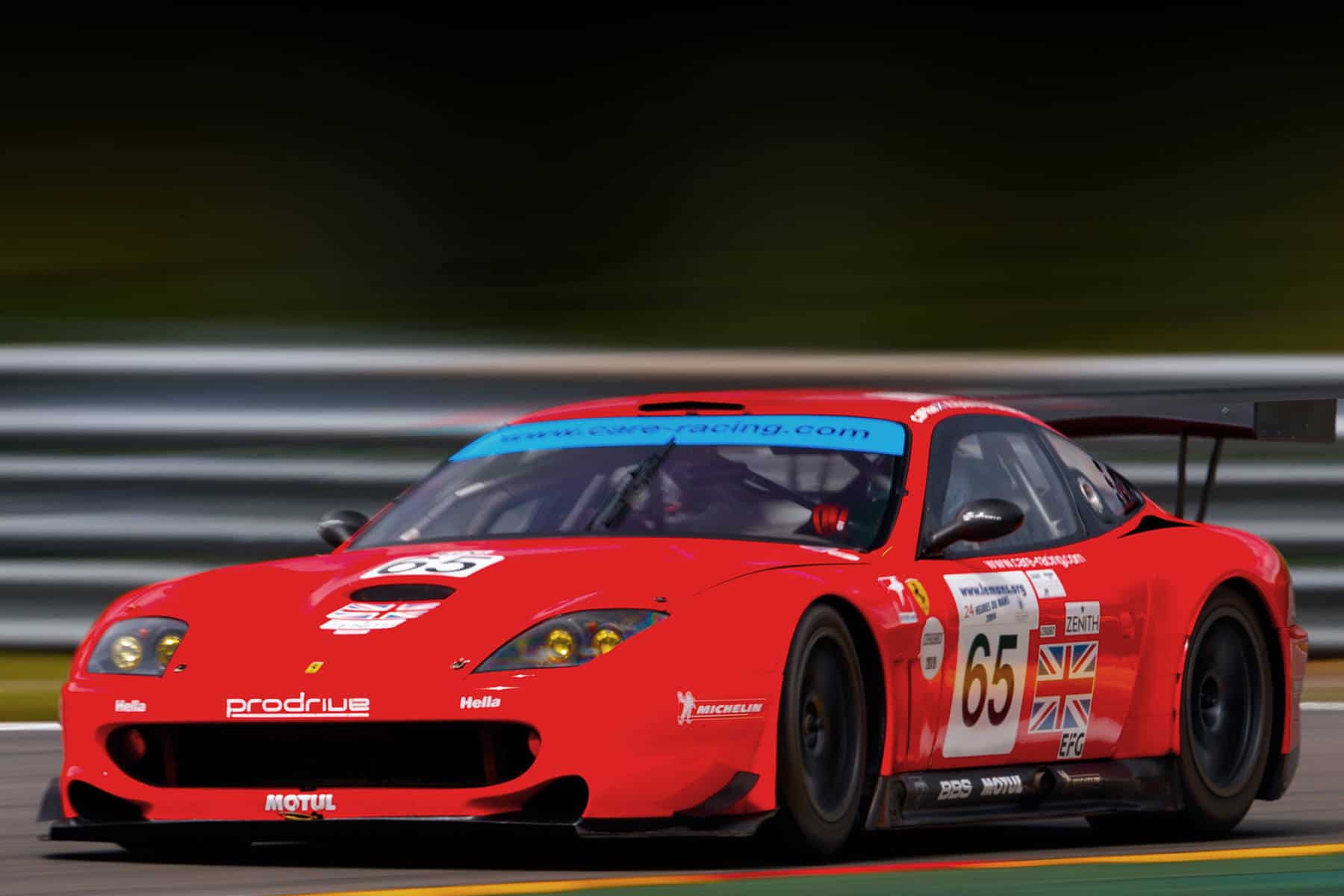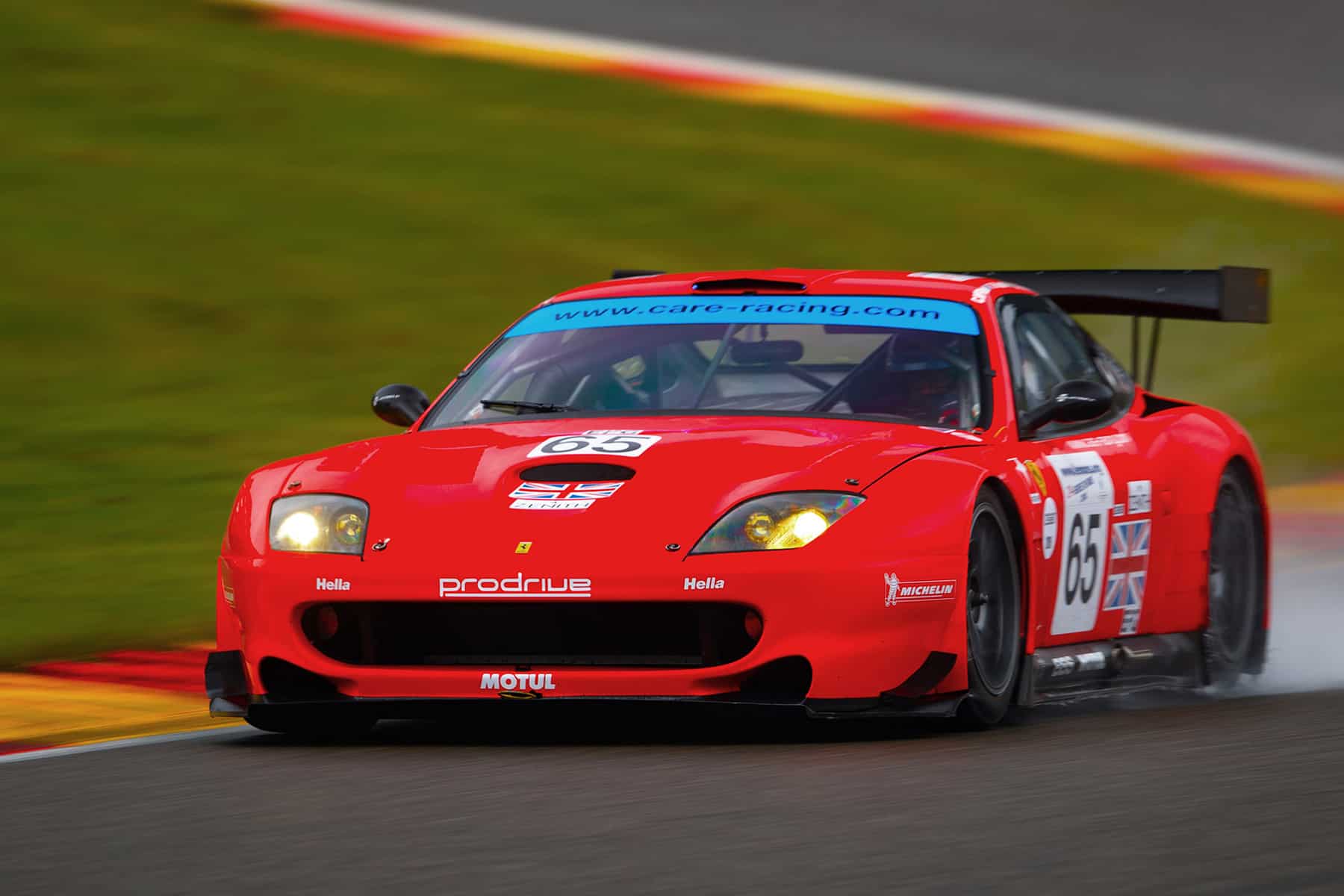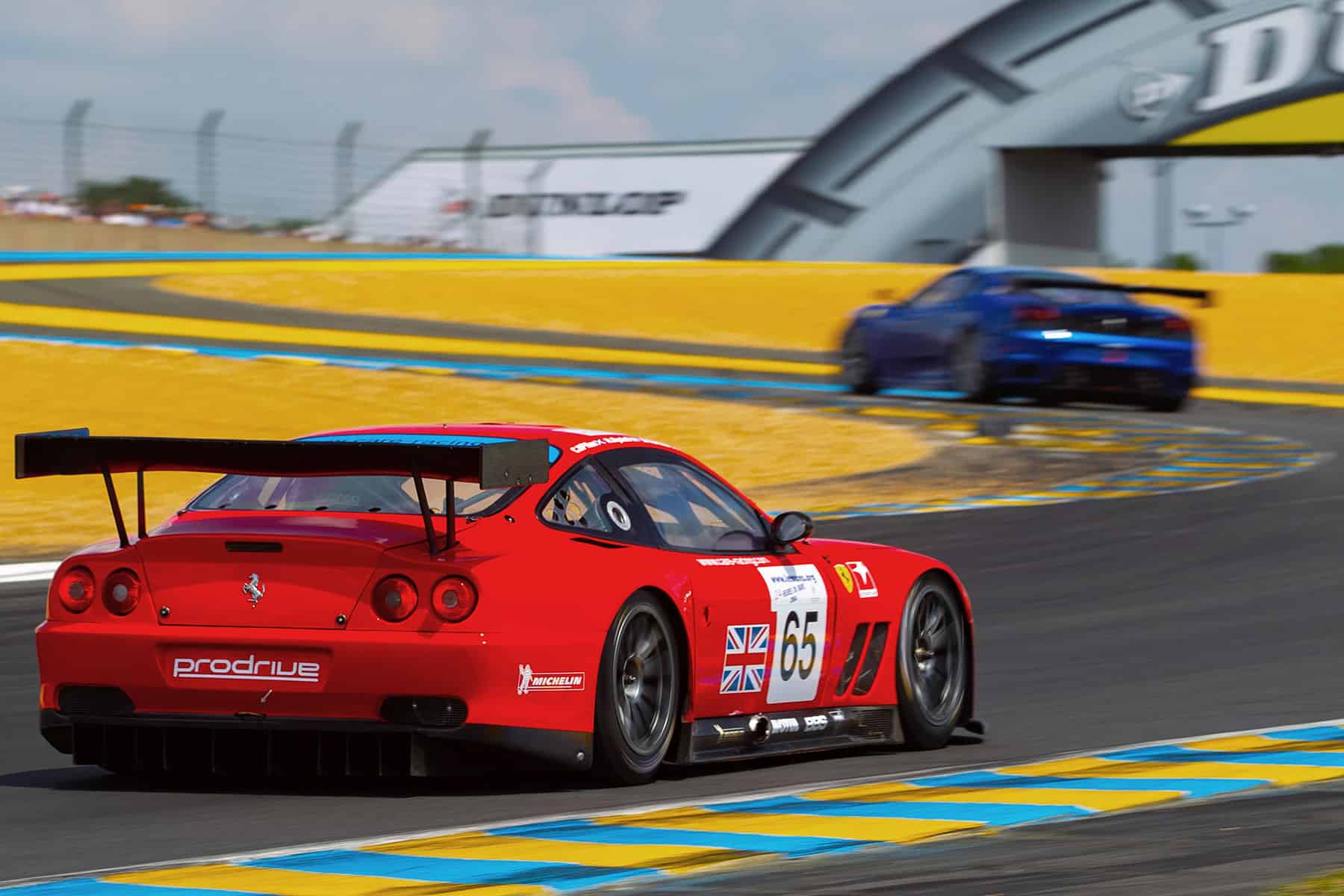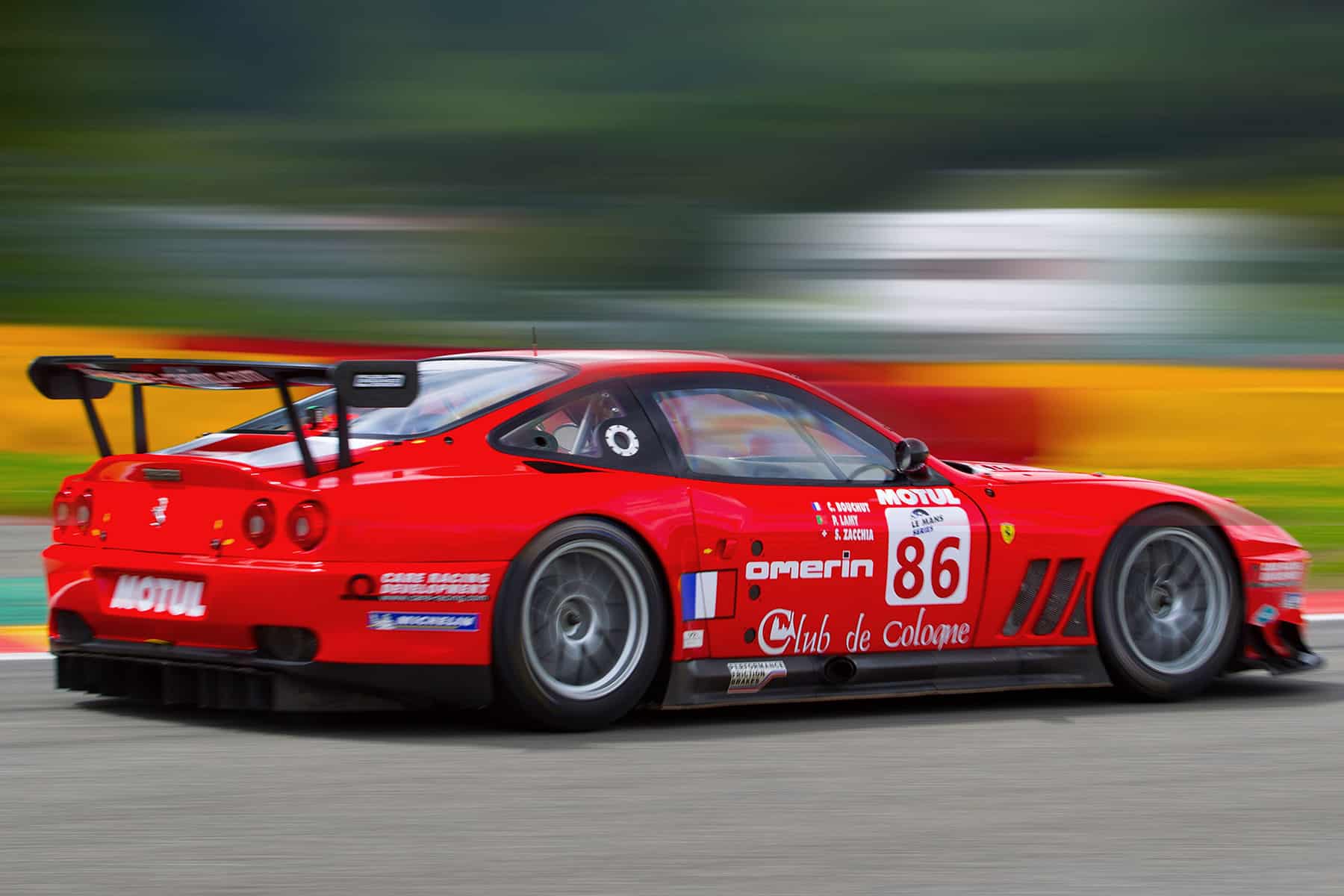Ferrari 550 Maranello by Prodrive
“One of the great racing cars of the modern age”
BY: WOUTER MELISSEN
With a final price of $4.3 million, a Ferrari 550 Maranello set a new record for the most expensive car ever sold at an online-only collector car auction at the RM Sotheby’s Shift/Monterey sale in August. Needless to say, this was no ordinary 550 Maranello.
Instead, it was one of the dozen examples modified by British specialist Prodrive for Care Racing Development in the early 2000s. Despite receiving no support or even the blessing of the Ferrari factory, these 550 Maranellos proved hugely successful in the highly competitive GT1 class. Swiss racer Steve Zacchia recalls: “It was the most desirable racing car at the time, it was the holy grail, and racing the car was something awesome.”
Despite the absolute lack of interest from the factory, this private effort revived the glory days of the 1950s and 1960s when V12-engined Ferraris dominated GT racing. With the many iterations of the 250 GT, the Italian manufacturer was virtually unbeatable in the production-based “Grand Touring” class. It was a successful and lucrative affair, as Ferrari managed to sell dozens of these GT racers to its wealthy customers. In the early 1960s, even more effort was put into the 250 GT after it was decided to run the World Sports Car Championship for Touring Cars. The result was the all-conquering and legendary 250 GTO. By the late 1960s, Ferrari focused its racing efforts on sports prototypes and Formula 1, and no GT racer was built at the Maranello factory after 1966.
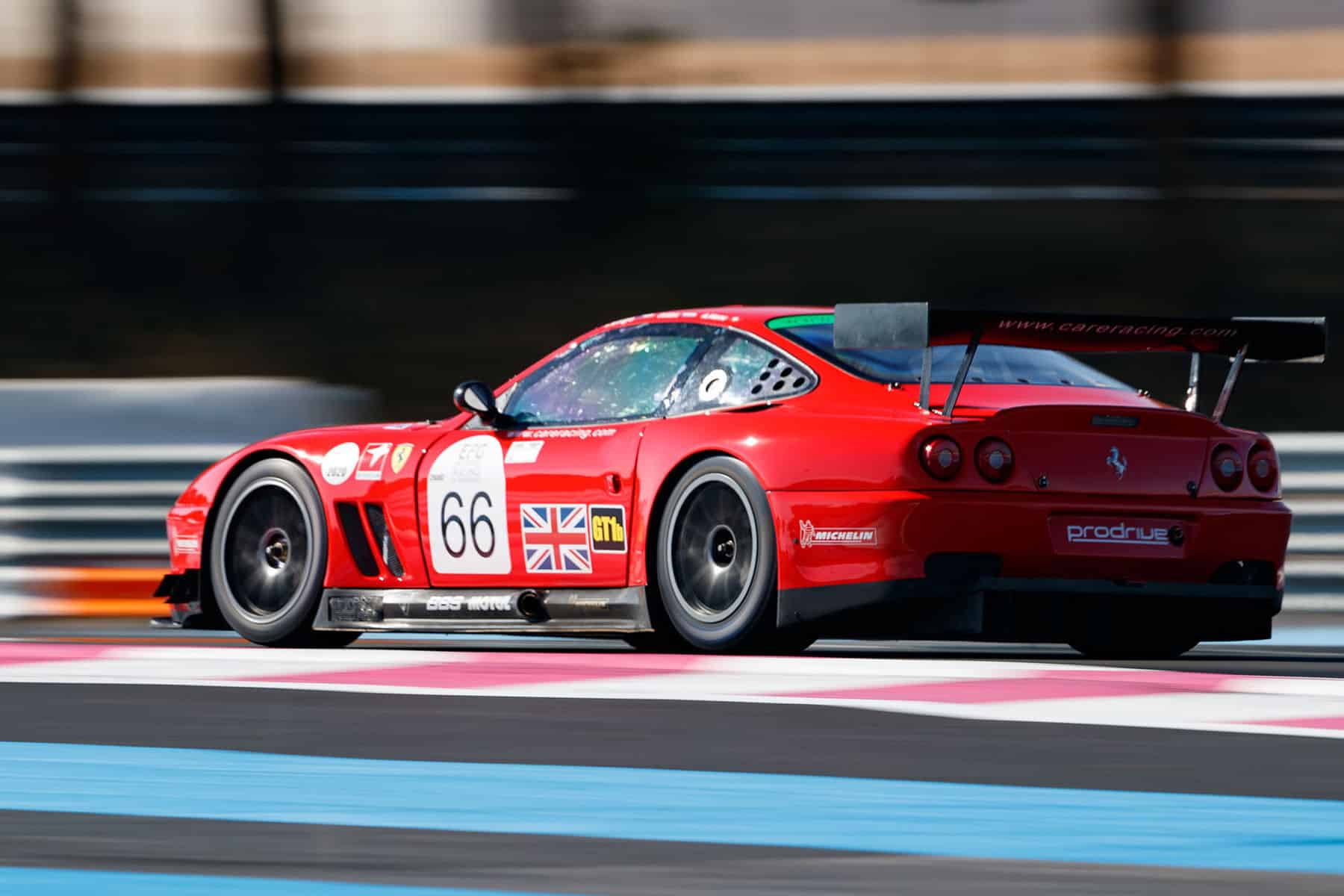
This by no means meant the company’s wealthy customers did not continue to race Ferrari GT cars, often with the blessing and back-door support of the factory. These were usually modified either by Ferrari’s aftermarket sales department or third-party specialists like Michelotto. The most famous of these were the competition 365 GTB/4 “Daytona” and 512 BB LM. With the demise of GT racing during the 1980s, these efforts naturally also faded. Thanks to the BPR and subsequent FIA GT series, production-based sports-car racing made a revival during the second half of the 1990s. This coincided with the launch of the new V12-engined 550 Maranello road car. In many ways, it was a spiritual successor to the 250 GTs of old.
Continuing the moratorium on GT racing, Ferrari still had little interest in creating a racing version. French privateer racing team Red Racing recognized the 550’s potential and commissioned Italian company Italtechnica to built a car to race in international events. It was built to qualify for what was initially the GTS class at Le Mans, which would later be dubbed GT1. In the FIA GT Championship, this was the top class, making the car eligible for outright wins. Those were certainly not on the board immediately for the Red Racing car, which lacked both pace and reliability. The prospect of racing a GT Ferrari was nevertheless alluring, so a second car was built by Italtechnica for First Racing from Switzerland.
Among Italtechnica’s customers was a Swiss racer by the name of Frederic Dor. He had spent the 1990s competing in the World Rally Championship at a fairly high level and was clearly looking for a new challenge. Dor was disappointed with the car he initially bought and brought it to English specialists Prodrive, the David Richards-founded company responsible for, among other things, the Subaru WRC Team at that time. Dor asked Prodrive to assess what was needed to make the car fast and reliable enough to be competitive. The solution proved a costly one – set aside the existing car and start with a clean sheet. This did not deter Dor, and through the newly established “Care Racing Development,” he commissioned Prodrive to do just that.
As there was no support from Ferrari, Prodrive had to start with complete 550 Maranello road cars. These were stripped to their bare bones and carefully rebuilt, retaining only the original space frame chassis. The suspension was beefed up and the engine was enlarged from the original 5.5 liters to an eventual full 6.0 liters. As per the regulations, the V12 was fitted with air-intake restrictors to create a level playing field with the rival cars, which used V8 or V10 engines of different sizes. Despite the restrictors, the modified engine produced around 600 hp. It was mated to a six-speed sequential gearbox that was produced by another British company, XTrac.
Tasked with modifying the Pininfarina-designed bodywork to suit the racing needs were Peter Stevens of McLaren F1 fame and ex-Lotus F1 designer Martin Ogilvie. He preserved the original lines but added subtle aerodynamic aids like the front splitter and full-width rear wing. The fenders were also widened to accommodate the larger wheels and tires. The panels themselves were crafted in carbon-fiber composite in an effort to keep the weight down. Compared with the road car, Prodrive managed to shave off a startling 550 kg to ensure the GT1 racer met the 1100 kg minimum weight set for the class.
The first example was ready in time for the official test for the 2001 Spa 24 Hours, where it was fielded by the Prodrive Allstars team for Dor himself and touring car racers Alain Menu and Rickard Rydell. It was very much a test session and the car was not deemed quite ready to compete in the actual race. Two months later, it lined up for the A1-Ring round of the FIA GT Series with Rydell and Peter Kox at the wheel. The two started on pole position and grabbed a debut victory. Competing in a support race that weekend and watching from the grandstand that day was a young Zacchia: “I remember hearing the sound of the 550 V12 and at that time I dreamed of driving the 550 once in my life. Three years after that moment, I was called by Jack Leconte, Larbre Competition’s owner, asking me to be at Monza track four days later to race the 550.”
A second car was completed later in the year and over the next couple of years a total of twelve cars were built, two of which were never raced. The Prodrive Allstars team fielded the cars in the American Le Mans Series and at Le Mans. The rest of the cars were leased to a variety of teams for other championships. Among them was the Larbre team for which Zacchia raced. The team fielded a 550 in the 2004 Le Mans Endurance Series in which Zacchia won the GT1 class at each of the four rounds, together with Pedro Lamy and Christophe Bouchut. In total, the 550 scored a staggering forty-nine outright or class victories. Among the absolute highlights were class wins at Le Mans and the Petit Le Mans in 2003 and an outright victory in the 2004 Spa 24 Hours.
The huge success of the Prodrive 550s had not gone unnoticed. Ferrari commissioned N-Technology to build a GT1 version of the 575M Maranello, which had replaced the 550 in the Italian company’s road car line-up. Dubbed the 575 GTC, the car was presented at the 2003 Frankfurt Motor Show and was available for customers to race. Despite the official blessing and backing from Ferrari, the 575 was rarely competitive, winning just two FIA GT races. Danny Sullivan, winner of the 1985 Indianapolis 500, raced one and later quipped that he never saw the front of a 550, just the back.
Looking to replace the 550, Dor turned to Aston Martin and partnered with Prodrive again to establish Aston Martin Racing. The first car commissioned was the Aston Martin DB9-based DBR9, which debuted in 2005. Like the 550 Maranello, the DB9 featured a front-mounted V12 engine, so many of the lessons learned could be adopted. Zacchia raced both: “In the Aston Martin, you immediately see that it has been produced by the same builder as the 550. Cockpit and dashboard look very similar to each other — seat position, too. Then in driving condition, the Aston Martin was easier to drive, smoother than the 550. You feel less tired at the end of a stint than in the 550, which was stiffer.” However, if he had to choose between the two to buy now: “I would choose the 550 immediately.”
One of the 550s was raced as late as 2009, but eventually all ten cars were retired and returned to Dor. With the exception of a rare appearance at the 2009 Goodwood Festival of Speed, the Prodrive 550s were hidden away. That changed in 2016, when American Ferrari collector and historic racer Steven Read was looking for a car to race from this era. The 575s were readily available but together with his curator, Pete Racely, he set his sights on the real prize – a Prodrive 550. Through British dealer Max Girardo, contact was made with Dor. In a subsequent three-hour lunch in Geneva, Racely managed to convince Dor that Read would be the right person to acquire one of the cars. Crucially, he explained that the car would be run again and it was, with Zacchia and Read behind the wheel during the 2017 Spa Classic.
Since then, Dor has been gradually letting go of what Racely described as his babies. Girardo himself was the next person to buy one and he raced his at the 2018 Le Mans Classic. A third was sold to a German historic racer who has been out with the car, as well. The example that was sold by RM Sotheby’s earlier this month is the fourth out of the stable and holds the distinction of being the 2004 Spa 24 Hours-winning chassis. If or when more will follow, we do not know.
The Prodrive-built Ferrari 550 Maranello remains one of the great racing cars of the modern age. It is also unique in that it was developed with private backing and proved successful against the factory-supported Dodge Vipers and Chevrolet Corvettes. The 550 Maranello may very well go into history as the last V12-engined Ferrari to score a win at Le Mans.
